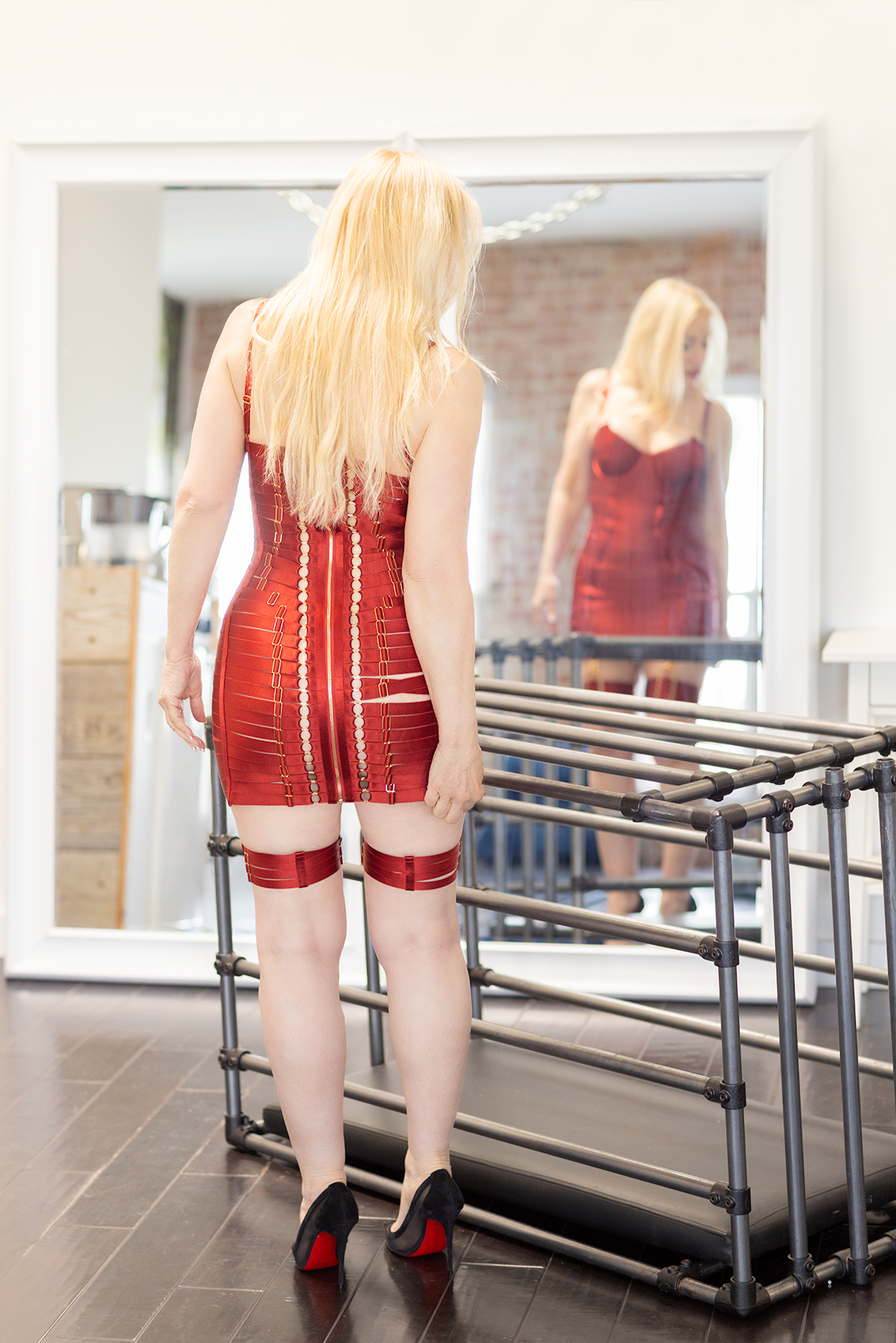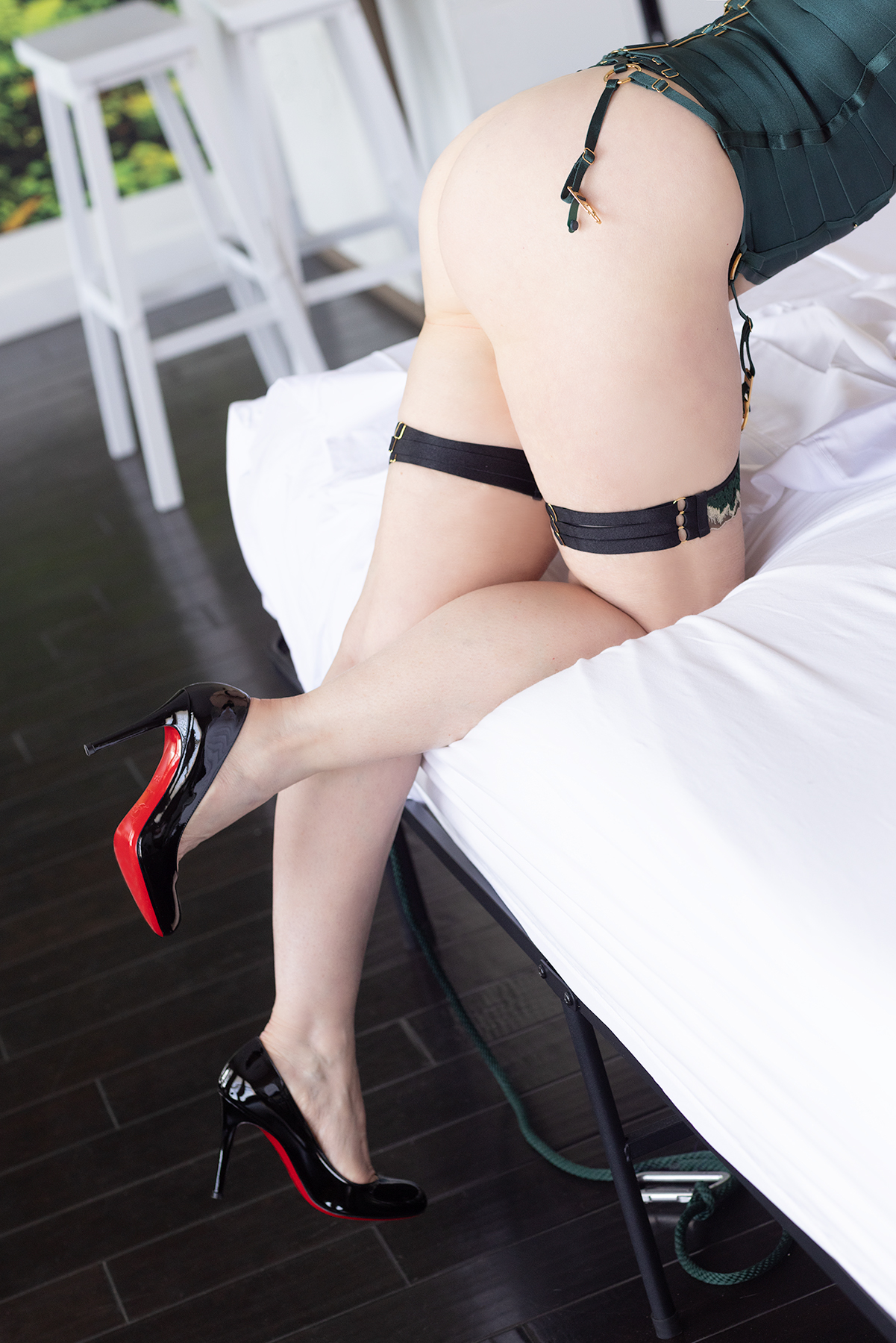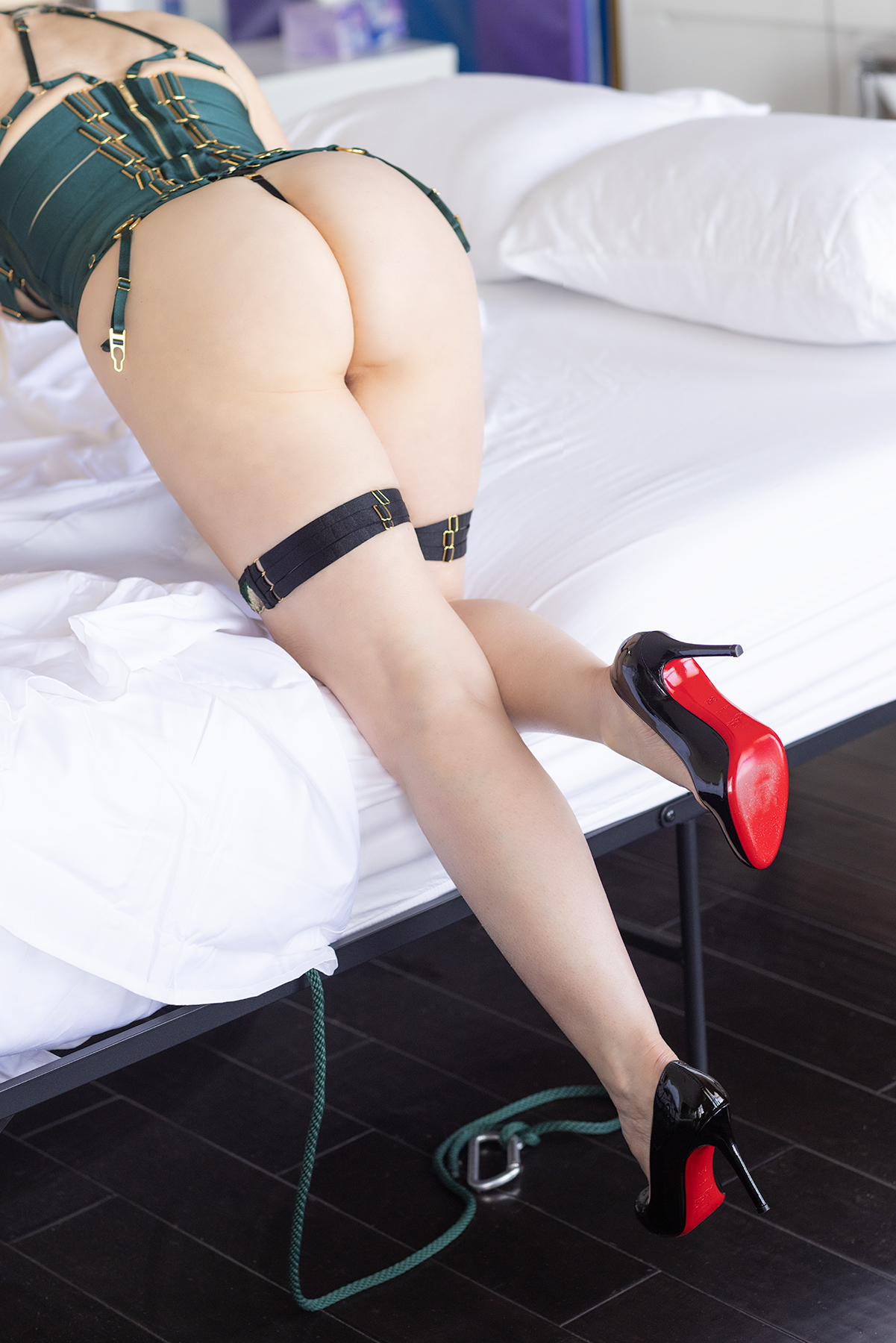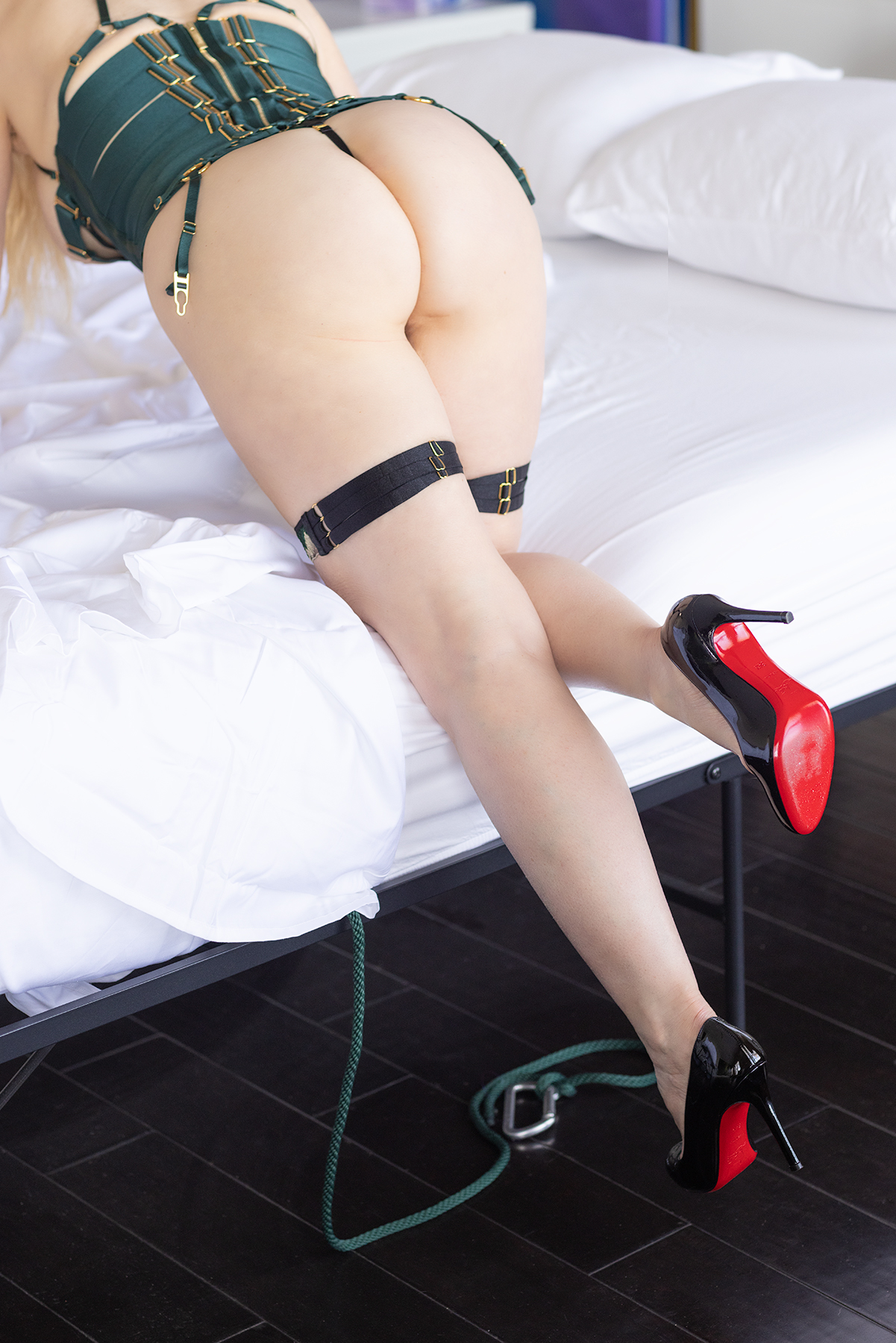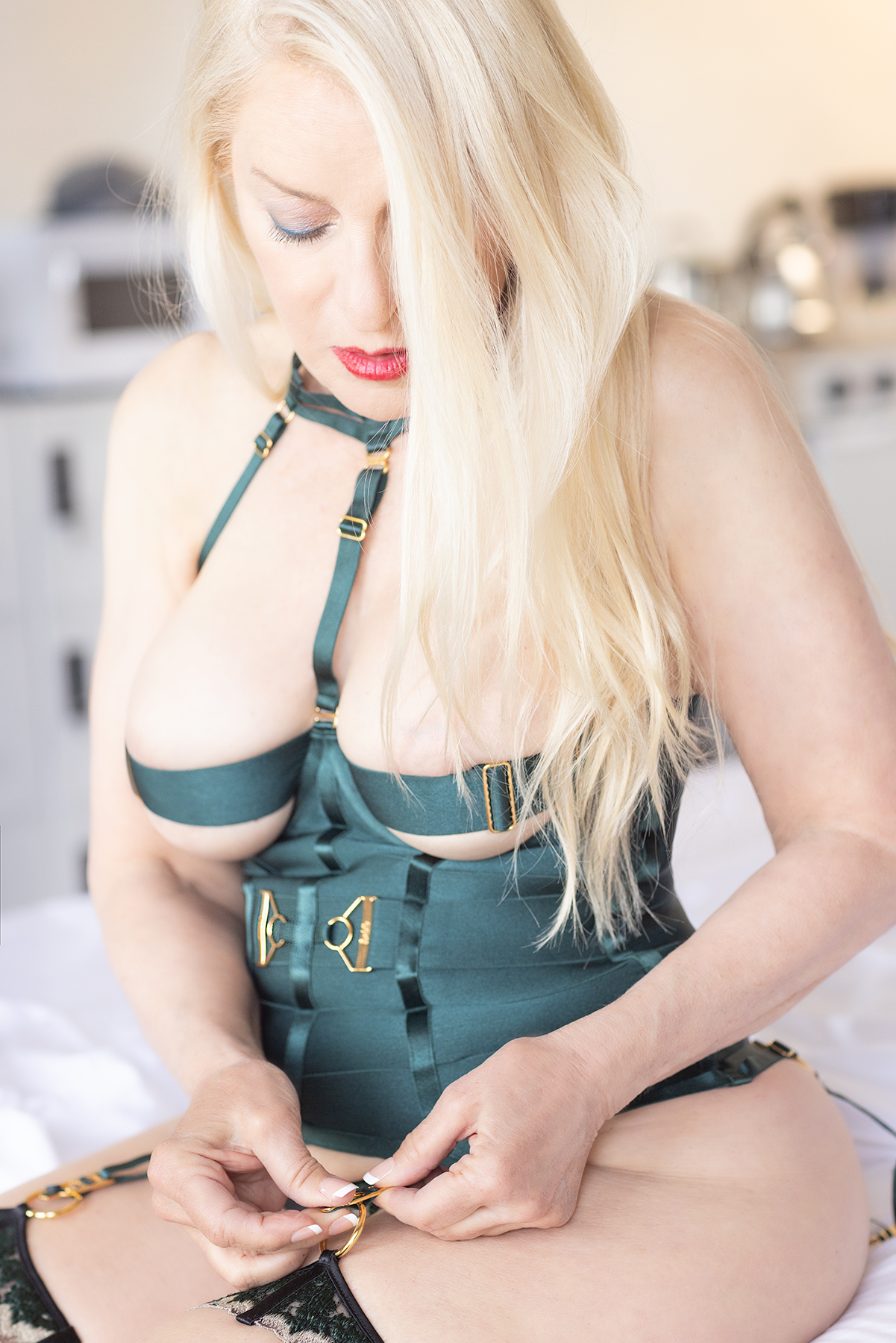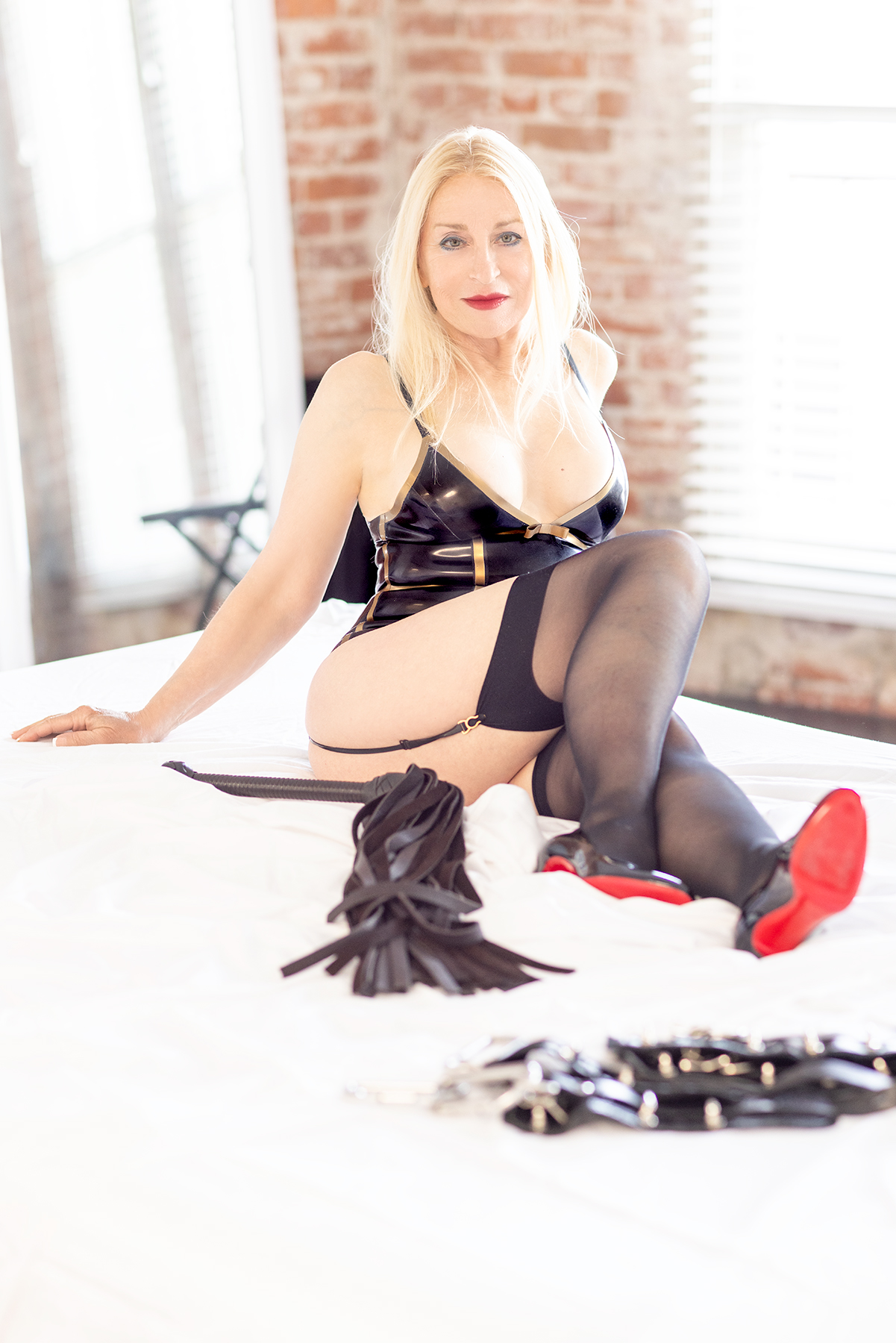There you are, at the toe of your Owners boot, smelling it (taking in the aroma of leather), kissing it (own up, you are loving the opportunity to take in the leather smell/feel/taste and give homage to Your leather/boot fetish as much as getting off on displaying how much you admire and are devoted to the Owner of these boots), when you open your eyes and see scuff marks. After the play is over, you muster all your boldness to offer
“May i clean and polish Your boots, Sir?”
Now what?
Be prepared, as all good scouts and submissives are, and have your Boot Kit ready.
Comprehensive Boot Kit Contents:
Saddle soap (or glycerin soap) and polish brush to apply soap
Kiwi polish in black, brown, neutral; Lincoln Wax or Kiwi Parade Gloss for hard, shiny results
Huberd’s Shoe Grease leather conditioner/waterproofer
Buffing brush
Matches or lighter
Bottle of water and spray bottle
Cotton teeshirt or flannel (old and lint free)
Boot length shoe horn
Optional:
Silk stockings
Military hardware-uniform button cleaner
Dublin garment cleaner
Dressing Oil
China Pencil
Additional laces or spool of lacing cord to replace worn laces
Meltonian or other crème polish
Edge dressing
Mineral spirits or lighter fluid
Emery board or fine sand paper
Small Windex bottle
Silicone Lube
Understanding What Products Are:
Polishes are what you put on leather to affect its color and shine. These products are made up of colorant, filler (which makes the product opaque), and vehicle (the bulk of what the product is made of; in the case of polishing products, it is usually a petroleum or alcohol product). The exact chemistry is usually not specified on the product, therefore, personal preference is based on experience. For light colored boots, there are polishes without colorant, which are sold as “neutral” polish.
“Shoe polish” or paste wax, is the most common. Kiwi is very accessible. Lincoln Stain Wax is a good base polish. It’s very opaque (scuffs don’t show through) and very black (lesser polishes may appear blue or green under certain lights). Unfortunately, Lincoln doesn’t produce the greatest shine, but when used with Kiwi Parade Gloss as a topcoat, Parade Gloss produces an amazing shine with buffing.
Shoe cream is a liquid form of paste wax. The advantage of cream is that it is easier to get onto the leather. However, the finish produced by a cream may be less durable and less resistant to scuffing than a polish done with paste wax. Meltonian (made by the Kiwi Company) is a shoe cream. It has a very rich feel to it.
Edge and heel dressing is applied to the visible portions of boots soles to render them black. Edge dressing is a colorant in a fast-drying vehicle (usually alcohol-based). It’s applied using a small sponge or brush. Cloths will absorb more of your product than a foam rubber sponge. Set the boots down on newspapers during the time it takes the dressing to dry because edge dressing stains.
Conditioners and oils are used to put moisture back into dry leather. Examples of these products are Huberd’s Oil, Lexol, Leather Therapy, 100% Mink Oil, and Neat’s-foot oil. These products are wiped onto the leather, and the leather is allowed time to absorb the oils (fifteen minutes to overnight, depending on the product and the dryness of the leather). If the oils are completely absorbed, another coat is applied. When the leather stops absorbing the oil, the excess oil is wiped off, and the leather is allowed to completely dry. After the leather is supple again, standard polishing is all that is necessary.
The China Pencil is used to coat a stitching that is a different color than the boots.
What is used to apply these products or take the products off:
In bootblacking, you are either applying a product, or making it pretty (putting pressure downward onto the polish to flatten it and wiping the product across the surface to smooth it).
Paste wax can be applied using a dauber, a cloth, or bare fingers.
If you are polishing boots for Your Master only, applying polish with one’s fingers is a major way to get into polishing boots. Using your fingers is personal touch, after all. Fingers work well with both paste and cream polishes. Fingers give you a lot of control over the amount of polish you apply. With a small amount of time and practice, you can reliably gauge how much polish to use. It’s very easy to get into most crevices found on boots with your fingers. Most importantly, if Master is wearing the boots while you polish, you can include a bit of a foot massage into the polish job. Yes, you will need to scrub your hands and clean/brush under your nails when you are finished.
Paste waxes because of their consistency, will often need a lot of rubbing to get them into a spreadable form. Cloths or your fingers are better at this. Cloths or your fingers will also be easier to get the polish where you want it and be more even in distribution.
Cream polishes work wonderfully with a dauber because they are already at the proper consistency. Daubers are small brushes with handles and medium firmness bristles. Cloths absorb your cream polish and aren’t recommended.
“Making it pretty” type of implements fall into two general categories: brushes and cloths.
Hand-held brushes are pretty easy to come by. The bristles should be significantly firmer and more tightly packed than those you find on a dauber. Antique brushes in good condition are a treasure.
Electric buffers require less physical effort to do a good job, provided the equipment is marketed for use by actual shoe-shine professionals. You would only want an electric buffer if you were doing many boots (like for a bar or charity).
Cloth-type buffing tools, (i.e., cotton cloths, sheepskin, and chamois) work by flattening raised sections of polish through pressure and absorbing extra polish. Sheepskin and chamois (sheepskin without the wool) are more expensive than cotton cloth and very hard to clean. Cotton polishing cloths marketed for automotive polishing are good and inexpensive. You want to find a low-nap fabric. Flannel or flannelette works nicely. Lighter colored rags are easier to find an unused section on, rather than on dark rags. Be sure that the rags are all cotton (old cotton T-shirts work well). Do not use polyester material.
The Doing Part Process:
Inspect the boots – look for loose threads, cracks in the leather, large debris or other issues. Fix what you can.
Clean the boots – ask the Owner of the boots if there is a way that they like the boots to be cleaned first. Then follow directions. Usually, a routine of using a brush to clean off dirt and following with foamy saddle soap is good. Do not do this to PVC / Patent leather / Vinyl , as a brush will scratch the surface.
Polish or Condition – use Kiwi or another boot polish or Huberd’s Shoe Grease or Oil if you’re just conditioning the leather. At least one coat of polish, rubbed on then buffed off. If conditioning, rub the conditioner in to the boot and let it absorb in. If the boots are very dry, apply another coat. i like the Huberd’s Oil because it absorbs into the leather fast, it only has natural ingredients. If someone has handed me a nasty old pair of shoes, the Grease is going on after i clean them, then they sit and dry. Miracle’s can happen using only these two steps.
Using Huberd’s Shoe Grease:
The directions on the label read:
For heavy shoes: Before treating thoroughly clean and warm boots to room temperature Rub grease into the leather with hands or soft cloth. Carefully grease where soles join uppers and all stitching. Allow penetrating the leather then apply another coat. After shoes have once been treated apply as needed to maintain waterproofing and conditioning of the leather.
Starting with cleaning off the leather is always a good idea. Dirt and dust clog the leather, and mixing it with grease will produce a sludge type substance over the shoe. A damp sponge and a spray bottle can get most of the dirt off. A toothbrush can be used to get dirt out of the crevice where the leather meets the edge. I like to then clean leather with saddle soap. i like the feel of Fiebings Saddle soap better then Kiwi and both are good products.
The container opening of Hubert Shoe Grease is very small. Either spoon some into a disposable small aluminum pie tin to use with a cloth or use your fingers. The grease comes off your hands with regular bar soap and water.
Apply the grease evenly over the entire boots, paying specific attention to any spots where the leather tends to crease, particularly at the ball of the foot, around the ankles and at the knees (on thigh-high boots). Flexing at these spots tends to wear the leather more and dry it faster, so care must be taken to keep the leather as supple and moisturized as possible. Multiple thin coats are more effective than one thick coat.
Follow the instructions and apply a second coat. The boots (especially if the leather is dry) will absorb the first coat immediately and still need more.
After the second coat, buff the boot, especially if the boot is oiled leather. Due to variations in how much grease the leather absorbs, there are often areas with grease still sitting on the surface. This extra grease should not pose a problem if the boots are being polished immediately afterward, but oiled leather shouldn’t be polished, therefore the excess grease needs to be removed. A cotton cloth is good for this, particularly one with low nap and low lint, since oiled leather tends to be slightly sticky, and you can wind up with lint clinging to the boot.
Etiquette for boot blacking:
During the inspection process, note the style that the wearer has laced their boots, and ask if they’d like to have them re-laced the same way.
Roll back pants from top of boot to keep soap and polish from staining the clothing.
Look at the boots for problems (scuffs, scratches, loose threads, etc.) Inform the wearer of any problems with their boots, especially ones that might keep you from getting good results. Also, explain anything that you’d like to do that might take more time, and tell them why – let them understand you are putting in more effort. Guide the wearer, as much as possible, in any further work that their boots might require.
Do not feel obliged to offer any personal service that you don’t wish to do just because you are bootblacking; you don’t need to lick boots or soles unless you want to!
Thank the wearer for trusting boots to your care; feel free to give them contact information if you’d like to work on their boots again.
If you are doing boots for a bar or fundraiser, tipping is traditional; average tip is between $10 and $20 and is generally done very subtly. If you are cleaning boots to make money for charity or a travel fund, make sure that is clear to the boot wearer to avoid any confusion (a sign is a nice touch).
Tricks of the trade:
Salt marks can be removed with a water and vinegar solution; you do NOT need to buy special products to clean them.
Softer leathers (cowboy boots, garment leathers) should be polished with a cream based polish, rather than Kiwi, to condition and protect, because the leather has a more fragile finish.
PVC and Vinyl should be cleaned with Windex or any spray on glass cleaner. Scuffs can be removed with rubbing alcohol and elbow grease.
Latex can be cleaned with a lint-free rag and Windex, then polished with silicone lube or latex polish (Black Beauty is one Brand name).
Gouges can be fixed by removing old polish and wax (use mineral spirits or lighter fluid, using a very fine grit sand paper if needed to remove the “peeling” leather, then re-build the polish layer by layer.
Suede shoes should be brushed with a suede brush.
Uggs can first be brushed with a suede brush, then a suede cleaner applied. You can waterproof Uggs.
If you don’t know how to fix something, research it first. Don’t just start guessing and trying something. People have put great effort into figuring stuff out, it is easier to research than make the wheel yourself. Joining a bootblacking yahoo group is a great resource.











